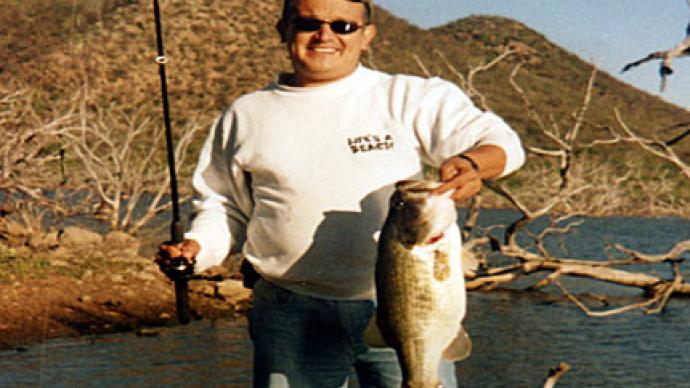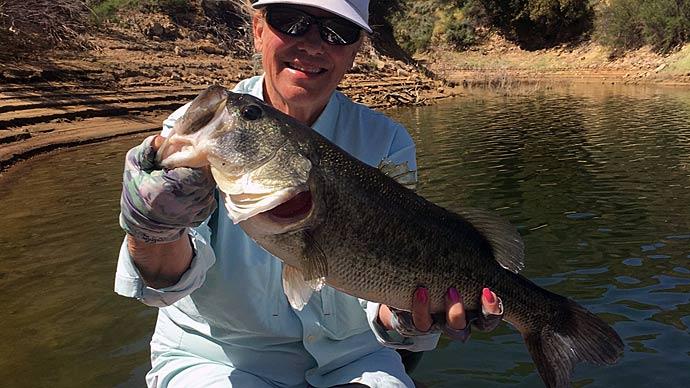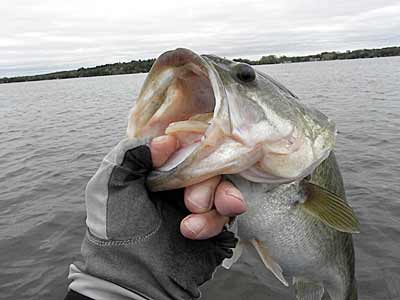
When the summer months start to show on the calendar, I start to think of the hot weather ahead. It also gets me thinking about tactics I haven't used in a while.
While I was getting the boat ready for a trip to practice for a tournament, I was pulling out some of the baits that I had for the springtime bite and getting it stocked for the upcoming summer months. As I was stocking plastics, it made me think of an interview I had with Big Bite Baits pro Jeff Kriet and some of the things he had said about fishing plastics during the summer months - mostly giant worms.
We all stock and fish plastics in our boat, but are we using the right baits to get the biggest bass to commit during the summer months?
We talked about a few different topics for this interview while sitting down with Jeff. I asked him about shaky head fishing, how he rigs his shaky head and what worms he is currently using. Then we moved on to the topic of plastic worms, and he touched on a few different subjects in this conversation.
Jeff then had a question for me. He asked, “What was the most popular-sized worm that I carry in my boat”? My reply to him was. "Living in the upper Midwest, I carry a stock of 4- to 6-inch worms and a few 7-1/2 inch worms in my mix."
His next question was, “Do you carry and fish any 10-inch worms in your boat”? My reply was, "No, I have thought about it. I just don't have the confidence that the bass in my area will bite something that big." He said, “You're a perfect example of what we are going to talk about.”
What You Need To Know
Jeff notes, “Many anglers think that 10-inch worms are too big and that bass won't bite them. There are some rare occasions where that may be true, but these situations are far and few between. You'll come across more situations where bass can and will be caught on 10-inch worms than situations where they won't. This is exactly the main reason that I'll throw a 10-inch Big Bite Kriet Tail worm as my number one bait during the summer months because no one else is. The bass never see this bait regularly. They see jigs and crankbaits day in and day out, and they see plastic worms regularly, but they aren't seeing big worms, 10-inch worms regularly, which is why I feel that they work so well. I'll take five bass that I catch on a 10-inch Kriet Tail worm compared to five bass that I can catch on a jig any day,” Jeff adds.
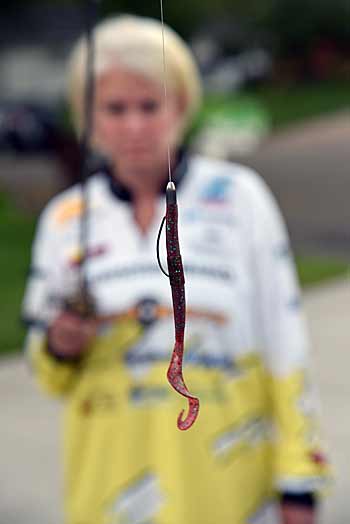
When it comes to rigging and fishing his 10-inch Kriet Tail worm, Jeff rigs it on a 5/0 offset Gamakatsu worm hook. This hook matches the pre-made hook slot built into the 10-inch Kriet Tail worm. These are vital additions Big Bite made to the worm helping to get a good solid hook up when you set the hook.
One of the biggest keys when fishing the Kriet Tail, Jeff says, “I'm dragging the worm along the bottom. Other fishermen use a traditional lift and drop retrieve. I drag the worm on the bottom. You could say that I use it as a depth finder. I drag the worm until I find something on the bottom. When I feel it up against a rock or a piece of wood, I'll work the worm because there is a good chance that this piece of cover is holding a bass. I'll gently pull my worm over this cover and let it sit for a while before moving on. If I feel the bass pick up my worm, I'll let the line tighten and use a sweep hook set on the bass. I use the same hook set I would if I were fishing a Carolina rig. I feel I get better, solid hooksets doing this, and I rarely miss a bass this way. Most other fishermen are using a standard lift hook set; I was losing bass on the way back to the boat doing this, and that is mainly why I changed how I'm setting the hook when using a 10-inch worm.
I'll use a 3/8oz tungsten worm weight for this setup. I try not to peg my weight; I want the weight to be free to slide up and down my line; I'll only peg the weight if I'm fishing in the brush. My go-to weights are 5/16oz to 3/8oz. I'll move up to a 1/2oz weight when using a technique called stroking the worm.
Here's a great technique to use when you know that bass are still in an area but have shut off or when you have a condition change. For example, you're fishing a body of water where they pull water to support power generation, but they may not be pulling water yet that day. You make a few casts but can't get the bass to trigger on your worm. This is the time to try the stroking technique.
Upsize your worm weight to a 1/2oz tungsten, make your cast and let the bait settle to the bottom. Give the worm a fast jerk to get your worm to go up, and then let it fall back to the bottom on a semi-slack line. Watch your line as your bait is falling, looking for signs of a bite. Pick up your line and feel if there is a fish there. If not, repeat the process. This will often trigger a few more bites from reluctant bass before the school shuts off entirely and moves”.
Make Changes
I'll switch worms in more challenging conditions, put the Kriet Tail worm down, and rig another 10-inch worm offering from Big Bite called the B2 Worm. The B2 is a long curly tail worm representing a 7 ½” curly tail worm but is bigger. This worm is toned down from the Kriet Tail worm and is a perfect go-to when the activity level of the bass is toned down with weather conditions or when fishing in pressured waters.
Most of the time, I'll fish this on the same setup as I do a Kriet Tail worm using an unpegged 3/8oz tungsten sinker and a 5/0 Gamakatsu offset hook. I'll fish this and my Kriet Tail worm on a 7’4” MH Denali N3 (N33743WJ) baitcaster rod teamed with a Lew’s BB-1 reel Lew’s BB-1 reel that is spooled with 16lb to 20lb Sunline Sniper line.
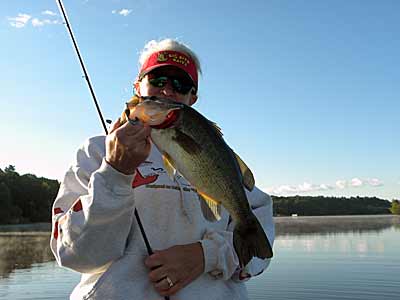
I pick the line to match the water conditions that I'm fishing. If I'm fishing around or in rocks, I'll opt for the 20lb Sniper, but if I'm fishing more on weed edges and mixed rock conditions, I'll usually lean more towards the 16lb Sniper.
On days when the bite is almost non-existent, I'll take a page from the finesse playbook, but I'll make a few adjustments. I'll grab an 8” Big Bite Big Finesse worm and rig it on a 3/16oz or 1/4oz Shaky Head Jig.
I prefer the football Shaky Head as it makes the Shaky Head stay up-right instead of falling on its side when you use the round-headed model. I make mine from the Do It Mold (FBB-6-SLA), and that is how I can beef up the hook a little to compensate for the bigger worm.
I'll match the equipment to the worm rig. I'll drop down to a 7’ medium action Denali Attax (AC702F) rod that is teamed with a Lew’s BB-1 spooled with 30lb Sunline XPlasma Asegai braided line. I'll add a Sunline FC leader in 12lb test. Leader length will be in the 10ft to 12ft range. I switch to a braided line for two reasons. One is increased feel due to the limited stretch. The second reason is better hook setting power with the bigger worm.
When we get deep into the summer months, give this big worm tactic a try in your waters. At first, I was reluctant to throw that giant worm, but now I'm a believer. Now, a 10-inch Kriet Tail worm plays a big part in my summer tactics. Just like Jeff asked me, “Do you throw a 10-inch worm”? I don't see any of my tournament competitors throwing it, so now I make it part of my tournament rotation. I can tell you it has paid big dividends helping me book a couple of wins. It's now your turn, next man up?
BassResource may receive a portion of revenues if you purchase using a link above.



